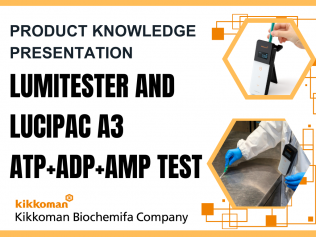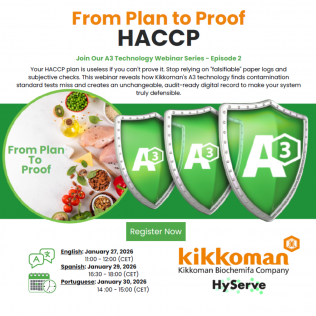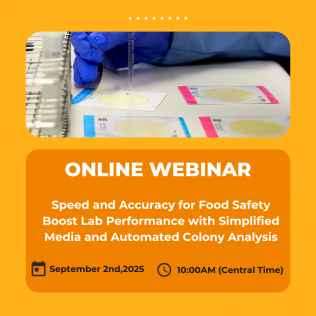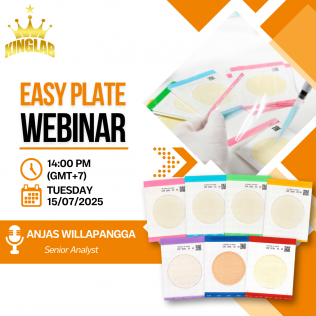
Outline
| Product | ATP Test (Kikkoman A3): LuciPac A3 Surface, LuciPac A3 Water, LuciPac A3 Pre-moisten,Easy Plate, Histamine Test, Histamine Check Swab,Allergen testing, |
|---|---|
| Event date | 2023.08.24 |
Seminar Detail
| Venue | Jakarta,Indonesia |
|---|
Result contents
The Indonesia International Laboratory Equipment, Analytical Instruments &Services Exhibition 2023 (INALAB 2023)
INALAB 2023 will be held on 23-25 August 2023, and will be co-located with INAPHARM, CHEMICAL INDONESIA, and Food Manufacturing Indonesia at Jakarta International Expo (JIExpo), Kemayoran, Jakarta-Indonesia. Known to be the showcase of the latest Laboratory Equipment and Analytical Instruments for various industies to Indonesia's Laboratories industries and Asia-Pacific Region. Indonesia as the largest market for the laboratory industry in the region is very potential for health-related needs. Based on the introduction of general health insurance in 2014, there is a huge number of Indonesian people who are entitled to health care, which reaches more than 220 million. The health care includes laboratory tests and very soon, all 270 million inhabitants will be entitled to benefit from it. There are nearly 2,900 hospitals in Indonesia. Many of them have
Seminar
ATP is the universal energy molecule found in all living things. ATP tests are widely used in all types of food processing plants or in hospitals because they are easy to use and provide immediate feedback and verification of sanitation processess.
Kikkoman Biochemifa Regional Manager Yusei Tsuda will introduce the new generation of ATP test, Lumitester Smart and LuciPac A3-ATP Test (Kikkoman A3). The only system available to detect all three adenylates of ATP (ATP+ADP+AMP or "A3") all in one test. Compared to conventional ATP test that could only detect ATP, ATP Test (Kikkoman A3) is able to detect the degradation of ATP, which most food residues are rich with.
Related seminars
-

Event Overview
HyServe will be hosting an upcoming webinar as part of the A3 Webinar Series.
Dates and Times (CET):
- English Session: Jan 27, 2026 | 11:00-12:00
- Spanish Session: January 29, 2026 | 16:30 – 18:00
- Portuguese Session: January 30, 2026 | 14:00 – 15:00
Are you confident your HACCP plan can move from a binder on a shelf to verifiable, audit-ready proof in seconds?
Managing food safety with manual logs and subjective visual checks is time-consuming, prone to errors, and difficult to defend during an audit. When a deviation occurs, how quickly can you "close the loop" to prove your corrective action was effective? Join our upcoming webinar to learn how to automate and strengthen your entire food safety program. We will explore how Kikkoman's A3 technology and the Lumitester App directly support the most critical "action" principles of HACCP—Monitoring, Corrective Actions, and Verification.
What You Will Learn
In this webinar, we will cover:
- Why Superior Sensitivity Matters: How Kikkoman's A3 technology (measuring ATP+ADP+AMP) finds contamination from processed or heated foods that standard ATP-only tests miss.
- Automate Monitoring (Principle 5): Move from subjective "visual checks" to objective, numerical RLU data for a consistent standard of "clean".
- "Close the Loop" on Corrective Actions (Principle 6): Use real-time results to trigger an immediate corrective action (re-clean) and instantly re-test to verify it was successful.
- Achieve Total Accountability (Principle 7): Eliminate "messy, error-prone, and falsifiable" paper logs. See how every test is automatically saved to the cloud with the operator ID, time, date, and location, creating an unchangeable, audit-ready digital record.
- Verify Your System: Use the app's data to instantly identify sanitation trends, validate cleaning procedures, and prove your HACCP plan is working effectively.
Target Audience
- Quality Assurance Managers
- HACCP Coordinators
- Food Safety Professionals
looking to save time, reduce risk, and create a truly defensible food safety system.
Speaker Information
- Jorge E. Padilla
- Stella Maciel
-

- Event date
- 2025.09.03
- Product
- Easy Plate (AC, EC, CC, SA, YM-R,EB,AC-R)
- Venue
- Webinar
-

- Event date
- 2025.07.15
- Product
- Easy Plate (AC, EC, CC, SA, YM-R,EB,AC-R)
- Venue
- Webinar

